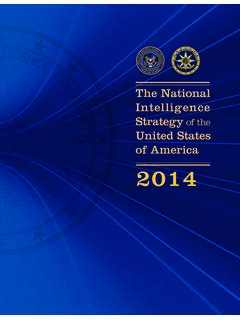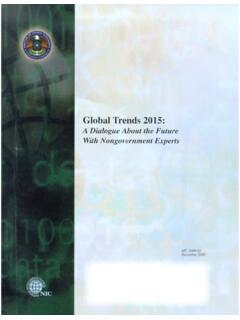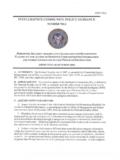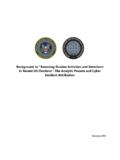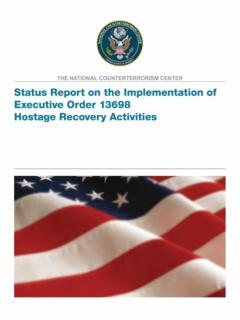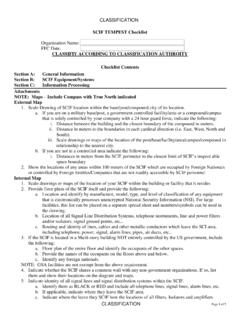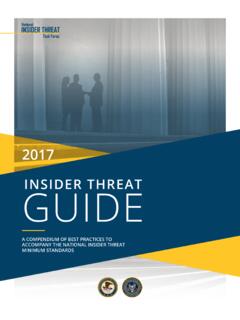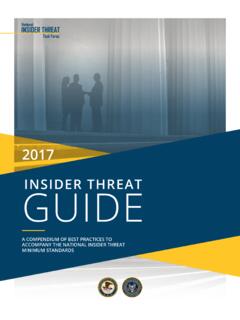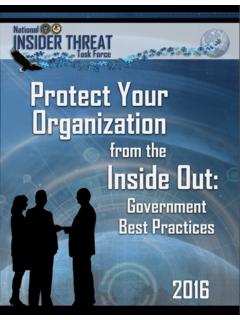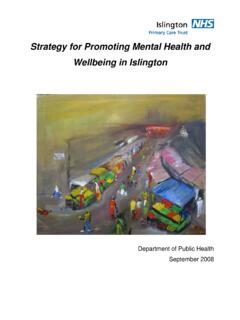Transcription of 2011 01 25 NSSS UNCLASS v3.4 FINAL FOR PRINT v2 - dni.gov
1 NATIONAL SECURITY SPACE strategy UNCLASSIFIED SUMMARY TABLE OF CONTENTS PREFACE .. i THE STRATEGIC ENVIRONMENT .. 1 STRATEGIC OBJECTIVES .. 4 STRATEGIC APPROACHES .. 5 Promoting Responsible, Peaceful, and Safe Use of Space .. 5 Providing Improved Space Capabilities .. 6 Partnering with Responsible Nations, International Organizations, and Commercial Firms .. 8 Preventing and Deterring Aggression against Space Infrastructure that Supports National Security .. 10 Preparing to Defeat Attacks and to Operate in a Degraded Environment.
2 11 IMPLEMENTATION .. 12 CONCLUSION A NEW TYPE OF LEADERSHIP .. 13 i (U) PREFACE During the past 50 years, leadership in space activities has benefited the global economy, enhanced our national security, strengthened international relationships, advanced scientific discovery, and improved our way of life. Space capabilities provide the United States and our allies unprecedented advantages in national decision-making, military operations, and homeland security. Space systems provide national security decision-makers with unfettered global access and create a decision advantage by enabling a rapid and tailored response to global challenges.
3 Moreover, space systems are vital to monitoring strategic and military developments as well as supporting treaty monitoring and arms control verification. Space systems are also critical in our ability to respond to natural and man-made disasters and monitor long-term environmental trends. Space systems allow people and governments around the world to see with clarity, communicate with certainty, navigate with accuracy, and operate with assurance. Maintaining the benefits afforded to the United States by space is central to our national security, but an evolving strategic environment increasingly challenges space advantages.
4 Space, a domain that no nation owns but on which all rely, is becoming increasingly congested, contested, and competitive. These challenges, however, also present the United States with opportunities for leadership and partnership. Just as the United States helped promote space security in the 20th century, we will build on this foundation to embrace the opportunities and address the challenges of this century. The National Security Space strategy charts a path for the next decade to respond to the current and projected space strategic environment.
5 Leveraging emerging opportunities will strengthen the national security space posture while maintaining and enhancing the advantages the United States gains from space. Our strategy requires active leadership enabled by an approach that updates, balances, and integrates all of the tools of power. The Department of Defense (DoD) and the Intelligence Community (IC), in coordination with other departments and agencies, will implement this strategy by using it to inform planning, programming, acquisition, operations, and analysis.
6 Ii NATIONAL SECURITY SPACE strategy UNCLASSIFIED SUMMARY 1 The now-ubiquitous and interconnected nature of space capabilities and the world s growing dependence on them mean that irresponsible acts in space can have damaging consequences for all of us. - 2010 National Space Policy Space is vital to national security and our ability to understand emerging threats, project power globally, conduct operations, support diplomatic efforts, and enable global economic viability. As more nations and non-state actors recognize these benefits and seek their own space or counterspace capabilities, we are faced with new opportunities and new challenges in the space domain.
7 The current and future strategic environment is driven by three trends space is becoming increasingly congested, contested, and competitive. Space is increasingly congested. Growing global space activity and testing of China s destructive anti-satellite (ASAT) system have increased congestion in important areas in space. DoD tracks approximately 22,000 man-made objects in orbit, of which 1,100 are active satellites (see Figure 1). There may be as many as hundreds of thousands of additional pieces of debris that are too small to track with current sensors.
8 Yet these smaller pieces of debris can damage satellites in orbit. THE STRATEGIC ENVIRONMENT Figure 1. Source: Joint Space Operations Center 0500010000150002000025000195819601962196 4196619681970197219741976197819801982198 4198619881990199219941996199820002002200 4200620082010N um ber o f O bjec tsTo t alDebrisUncataloged*PayloadsRocket bodies2000 Total: 9,6001980 Total: 4,6002010 Total: 22,000* U n ca t a l oged = u n k n ow n ob j ect a n d / or u n k n ow n or i gi n1990 Total: 6,9001970 Tot al.
9 1,800 Iridium-COSMOS CollisionCO SMO S 2421 BreakupChinese ASAT TestShemya Radar to full-power opsSatellite Catalog Growth NATIONAL SECURITY SPACE strategy UNCLASSIFIED SUMMARY 2 Today s space environment contrasts with earlier days of the space age in which only a handful of nations needed to be concerned with congestion. Now there are approximately 60 nations and government consortia that own and operate satellites, in addition to numerous commercial and academic satellite operators (see Figure 2).
10 This congestion along with the effects of operational use, structural failures, accidents involving space systems, and irresponsible testing or employment of debris-producing destructive ASATs is complicating space operations for all those that seek to benefit from space. Increased congestion was highlighted by the 2009 collision between a Russian government Cosmos satellite and a commercial Iridium satellite. The collision created approximately 1,500 new pieces of trackable space debris, adding to the more than 3,000 pieces of debris created by the 2007 Chinese ASAT test.
